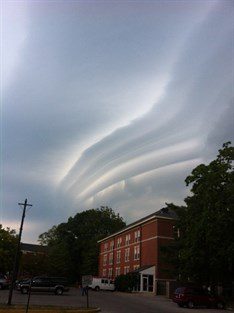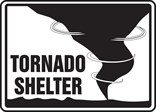Severe weather safety
Procedures

The City of Richmond has a city-wide warning system for severe weather. Outdoor sirens will sound when a tornado has been reported within the area (sirens are only designed to be heard outdoors and occupants of buildings should NOT rely on them as their primary weather warning).
Severe weather includes severe thunderstorms, high winds, large hail or tornados. Severe weather watches and warnings are issued by the National Weather Service.
- A watch means conditions are favorable for the development of severe weather
- A warning is issued when severe storms are approaching our area
- The Earlham Emergency Notification System will automatically send an alert upon a Tornado Warning being issued in the Richmond area
Severe weather watches and warning information may be received by monitoring weather alert radios, local television and radio broadcasts.
Alerts can also be received by subscribing to one of several free weather alert applications for email and text message notifications (i.e. www.weather.com, www.nixle.com)
Storm shelters
The safest shelter areas are small windowless interior rooms or interior corridors on the lowest available floor (preferably the basement). Stay away from windows, skylights and exterior doors.
- Seek shelter on the floor you are on if you are unable to use the stairs. Small windowless rooms, such as restrooms or interior offices, are good choices. Use a buddy system.
- Do not shelter in large spaces such as cafeterias, concourses, auditoriums, theaters or gymnasiums.
- Do not use the elevators during severe weather.
In the event of emergency, call 911 and then notify Public Safety.
